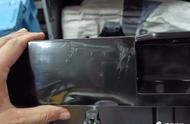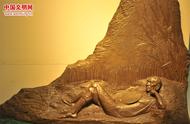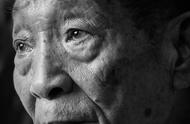腰围的测量方法为被测者站立,双脚分开25至30厘米,体重均匀分配,在呼气之末、吸气未开始时用软尺测量经髂嵴点的腹部水平围长【31】。
臀围的测量方法为被测者两腿并拢直立,两臂自然下垂,皮尺水平放在前面的耻骨联合和背后臀大肌最凸处。【31】
腰臀比(Waist-to-Hip Ratio,WHR)是腰围和臀围的比值,例如,使用上述方法测量得到腰围结果为70cm,臀围为100cm。则腰臀比(WHR )= 腰围÷臀围 = 70÷100 = 0.7,不属于中心性肥胖。在一系列跨文化研究中,不同年龄的男性都认为腰臀比是0.7的女性最有魅力【32】
综上所诉,单独BMI一项指标,它的统计学意义大于对个体肥胖的评判价值。体脂肪率虽然比BMI更具备参考价值,但是精确的测量体脂率往往需要较高的费用,或者过于繁琐的操作,健身房的体测仪和家用体脂称的测量方法具有很大的局限性。趋势参考和性价比角度来说都不如使用皮褶测量法(皮脂钳)和目测法。腰围或者腰臀比的测量可以很好的反映出腹部脂肪与内脏脂肪情况,如果对测量的精度有更高的要求比如有内脏脂肪相关疾病,应该定期到医院或者体检中心测量内脏脂肪情况。相对于生物电阻方法获取的体脂肪率与内脏脂肪等级,结合BMI和腰围(腰臀比)来评价自身是否肥胖,是否内脏脂肪超标,是否需要减肥更加合适。如果BMI和腰围(腰臀比)都在正常范围之内,则可以判断自身不需要以健康为目的减肥,如果对自己的身材不满意,则需要进行的是“身材管理”而不是“体重管理”,在各大媒体平台上看到的对超重或者肥胖者的一些减重建议,也许并不适合你。至于如何更好进行身材管理,并不在我们这篇文章的讨论范围之内,但是可以说,运动,在身材管理当中扮演的角色,要比其在体重管理中,重要的多。对身材管理有兴趣的朋友,可以等我后续的文章视频更新,也可以自学健身与运动知识,养成运动习惯,如果有经济预算,建议走进健身房,咨询专业的健身教练。我是Seal,一个减重165斤的佛系肥宅,最后祝你,身体健康,谢谢。
参考资料【1】National Heart, Lung, and Blood Institute. Managing overweight and obesity in adults: systematic evidence review from the obesity expert panel, 2013[J]. US Department of Health and Human Services: National Institutes of Health, 2013.
【2】National Heart, Lung, Blood Institute, et al. Clinical guidelines on the identification, evaluation, and treatment of overweight and obesity in adults: the evidence report[M]. National Heart, Lung, and Blood Institute, 1998.
【3】Bhaskaran K, Douglas I, Forbes H, dos-Santos-Silva I, Leon DA, Smeeth L. Body-mass index and risk of 22 specific cancers: a population-based cohort study of 5•24 million UK adults. Lancet. 2014 Aug 30;384(9945):755-65. doi: 10.1016/S0140-6736(14)60892-8. Epub 2014 Aug 13.
【4】Eknoyan, G. (2007). Adolphe Quetelet (1796–1874)—the average man and indices of obesity.
【5】陈春明, 孔灵芝. 中国成人超重和肥胖症预防控制指南[J]. 北京: 人民卫生出版社, 2006.
【6】Choo, V. (2002). WHO reassesses appropriate body-mass index for Asian populations. The Lancet, 360(9328), 235.
【7】Who, E. C. (2004). Appropriate body-mass index for Asian populations and its implications for policy and intervention strategies. Lancet (London, England), 363(9403), 157.
【8】Wang, Y., & Chen, H. J. (2012). Use of percentiles and z-scores in anthropometry. In Handbook of anthropometry (pp. 29-48). Springer, New York, NY.
【9】陈良业. (2011). 《 国家学生体质健康标准》 研究. 体育文化导刊, (7), 86-90.
【10】Schmidt, D. S., & Salahudeen, A. K. (2007, November). Cardiovascular and survival paradoxes in dialysis patients: Obesity‐survival paradox—still a controversy?. In Seminars in dialysis (Vol. 20, No. 6, pp. 486-492). Oxford, UK: Blackwell Publishing Ltd.
【11】Kalantar-Zadeh, K., Block, G., Horwich, T., & Fonarow, G. C. (2004). Reverse epidemiology of conventional cardiovascular risk factors in patients with chronic heart failure. Journal of the American College of Cardiology, 43(8), 1439-1444.
【12】Niedziela, J., Hudzik, B., Niedziela, N., Gąsior, M., Gierlotka, M., Wasilewski, J., ... & Rozentryt, P. (2014). The obesity paradox in acute coronary syndrome: a meta-analysis.
【13】Cao, C., Wang, R., Wang, J., Bunjhoo, H., Xu, Y., & Xiong, W. (2012). Body mass index and mortality in chronic obstructive pulmonary disease: a meta-analysis. PloS one, 7(8), e43892.
【14】Lo, Y. T. C., Wahlqvist, M. L., Huang, Y. C., Chuang, S. Y., Wang, C. F., & Lee, M. S. (2017). Medical costs of a low skeletal muscle mass are modulated by dietary diversity and physical activity in community-dwelling older Taiwanese: a longitudinal study. International Journal of Behavioral Nutrition and Physical Activity, 14(1), 31.
【15】American College of Sports Medicine. (2012). ACSM's resource manual for guidelines for exercise testing and prescription. Lippincott Williams & Wilkins.
【16】Clark, M., & Lucett, S. (Eds.). (2010). NASM essentials of corrective exercise training. Lippincott Williams & Wilkins.
【17】Bryant, C. X., & Green, D. J. (2006). ACE personal trainer manual: The ultimate resource for fitness professionals. Recording for the Blind & Dyslexic.
【18】Garrow, J. S., & Webster, J. (1985). Quetelet's index (W/H2) as a measure of fatness. International journal of obesity, 9(2), 147-153.
【19】Freedman, D. S., Horlick, M., & Berenson, G. S. (2013). A comparison of the Slaughter skinfold-thickness equations and BMI in predicting body fatness and cardiovascular disease risk factor levels in children. The American journal of clinical nutrition, 98(6), 1417-1424.
【20】Wohlfahrt-Veje, C., Tinggaard, J., Winther, K., Mouritsen, A., Hagen, C. P., Mieritz, M. G., ... & Main, K. M. (2014). Body fat throughout childhood in 2647 healthy Danish children: agreement of BMI, waist circumference, skinfolds with dual X-ray absorptiometry. European journal of clinical nutrition, 68(6), 664.
【21】Steinberger, J., Jacobs Jr, D. R., Raatz, S., Moran, A., Hong, C. P., & Sinaiko, A. R. (2005). Comparison of body fatness measurements by BMI and skinfolds vs dual energy X-ray absorptiometry and their relation to cardiovascular risk factors in adolescents. International journal of obesity, 29(11), 1346.
【22】Sun, Q., Van Dam, R. M., Spiegelman, D., Heymsfield, S. B., Willett, W. C., & Hu, F. B. (2010). Comparison of dual-energy x-ray absorptiometric and anthropometric measures of adiposity in relation to adiposity-related biologic factors. American journal of epidemiology, 172(12), 1442-1454.
【23】Lawlor, D. A., Benfield, L., Logue, J., Tilling, K., Howe, L. D., Fraser, A., ... & Sattar, N. (2010). Association between general and central adiposity in childhood, and change in these, with cardiovascular risk factors in adolescence: prospective cohort study. Bmj, 341, c6224.
【24】Wilmore, J. (1969). The use of actual, predicted and constant residual volumes in the assessment of body composition by underwater weighing. Medicine and science in sports, 1(2), 87-90.
【25】Dehghan, M., & Merchant, A. T. (2008). Is bioelectrical impedance accurate for use in large epidemiological studies?. Nutrition journal, 7(1), 26.
【26】McCrory, M. A., Gomez, T. D., Bernauer, E. M., & Molé, P. A. (1995). Evaluation of a new air displacement plethysmograph for measuring human body composition. Medicine and science in sports and exercise, 27(12), 1686-1691.
【27】Margulies, L., Horlick, M., Thornton, J. C., Wang, J., Ioannidou, E., & Heymsfield, S. B. (2005). Reproducibility of pediatric whole body bone and body composition measures by dual-energy X-ray absorptiometry using the GE Lunar Prodigy. Journal of Clinical Densitometry, 8(3), 298-304.
【28】杨虹, & 陈娜萦. (2010). 成年人中心性肥胖流行特征研究现状 (Doctoral dissertation).
【29】翟屹, 赵文华, 周北凡, & 陈春明. (2006). 中国成年人中心性肥胖腰围切点值的进一步验证. 中华流行病学杂志, 27(7), 560-565.
【30】陈春明, & 孔灵芝. (2006). 中国成人超重和肥胖症预防控制指南. 北京: 人民卫生出版社.
【31】席焕久,陈昭主编.(2010). 人体测量方法.北京市:科学出版社.
【32】巴斯, 哲宏, 倩, & 晏. (2007). 进化心理学: 心理的新科学. 华东师范大学出版社.















